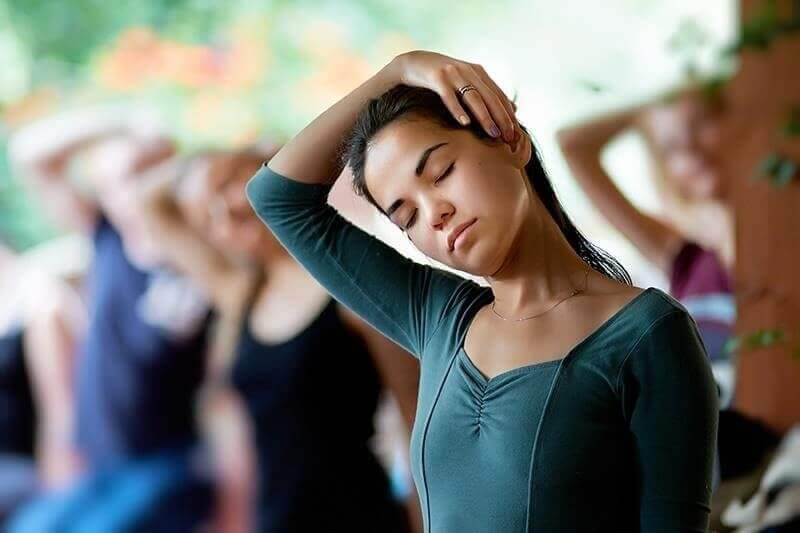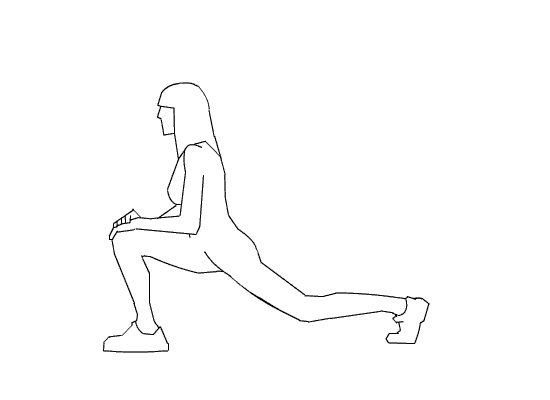4 Basic Elements of Any Good Stretch: Do It Right!


Reviewed and approved by the doctor Karla Henríquez
When you stretch before and after exercise, it’s very important for your breathing to be controlled and in sync with your movements.
You may already know all kinds of stretches. However, maybe you are confused about how to stretch correctly, or even think that it doesn’t do anything. Well, today we’ll talk about 4 basic elements of any good stretch.
How, exactly? By giving you examples of stretches that we all know, but with tips on how to do them correctly. Keep these 4 things in mind that we normally neglect.
Basic elements of any good stretch
You should stretch before and after exercising. This will keep you from getting injured and will allow your muscles to recover more quickly.
Recommended reading:
Seven Easy Exercises That You Can Do At Home
If you get cramps or more aches and pains that you think is normal, you may not be stretching correctly. Let’s look at how to stretch well and begin making changes today.
1. Go slow

However, this could be counterproductive. Be careful when you stretch, not only to protect yourself from injury but also because it won’t give you any positive results. Here are two tips:
- The more still you are during the stretch, the better.
- Do the stretch as slowly as possible.
For example, think about the neck stretch. If you do it with sudden, jerky movements, you could hurt yourself. You’ll probably feel a sharp pain and even more tension than before; you could be causing the muscle to contract, not relax.
2. Pull on the muscle as you stretch

If you don’t feel your quads stretching as much as possible, then you’re not doing it right. You have to feel the muscle pull. So how can you do a stretch like this? There are a few options:
- Try to make the stretch harder. The king dancer yoga pose is a tough but effective example. Your quads will really respond to it.
- Switch stretches. One way to change up your quad stretch is by kneeling on the floor and letting your body fall backwards. This will stretch both legs at the same time. Plus, your body weight will be increasing the intensity.
3. Don’t forget to breathe

Take a look at this too:
Discover 4 Breathing Techniques to Fight Stress
As you inhale, your muscles stretch, contract, and the stretch deepens.
- For example, if you’re stretching your triceps, breathe in as you bring your bent arm behind your head.
- Do it slowly and continue breathing in as you push with your other hand to make the stretch more intense.
- Then exhale as you slowly release the pressure and bring your arm back to your starting position. Exhaling helps relax the muscle, while inhaling helps lengthen it.
4. Stretch for long enough
The last foundation for a good stretch has to do with timing. You probably don’t pay that much attention to it most of the time, and as a result, you may be holding each stretch for only a few seconds. That’s not good.
You should hold each stretch for an average of 30 seconds. It may be hard at first, but it’ll pay off. Over time, you’ll notice yourself becoming more and more flexible.
Don’t underestimate the power of stretching
Underestimating the value of stretching could end in injury, cramps, and inflexibility. However, that’s why we wanted to give you the tips above; it’s important.
Also, remember that you should stretch your whole body, from your legs to your back to your arms and neck. As you do, keep the basic elements we went over today in mind.
It doesn’t matter how tired you are after your workout or how much of a rush you’re in. Quality stretching does give positive results if you keep at it. Even if you don’t notice it right away, you’ll see results soon.
All cited sources were thoroughly reviewed by our team to ensure their quality, reliability, currency, and validity. The bibliography of this article was considered reliable and of academic or scientific accuracy.
- P. Calle Fuentes; M. Muñoz Cruzado; D. Catalán Matamoros; MT. Fuentes Hervías (2006). Los efectos de los estiramientos musculares: ¿qué sabemos realmente? (España). https://www.elsevier.es/es-revista-revista-iberoamericana-fisioterapia-kinesiologia-176-articulo-los-efectos-estiramientos-musculares-que-13092669
- Kulwarang Wongwilairat; Wichai Eungpinichpong; Somporn Kantharadussadee Triamchaisri; Orawan Buranruk; Rungthip Puntumetakul (2018). Muscle stretching with deep and slow breathing patterns: a pilot study for therapeutic development. https://www.researchgate.net/publication/327162839_Muscle_stretching_with_deep_and_slow_breathing_patterns_a_pilot_study_for_therapeutic_development
This text is provided for informational purposes only and does not replace consultation with a professional. If in doubt, consult your specialist.








